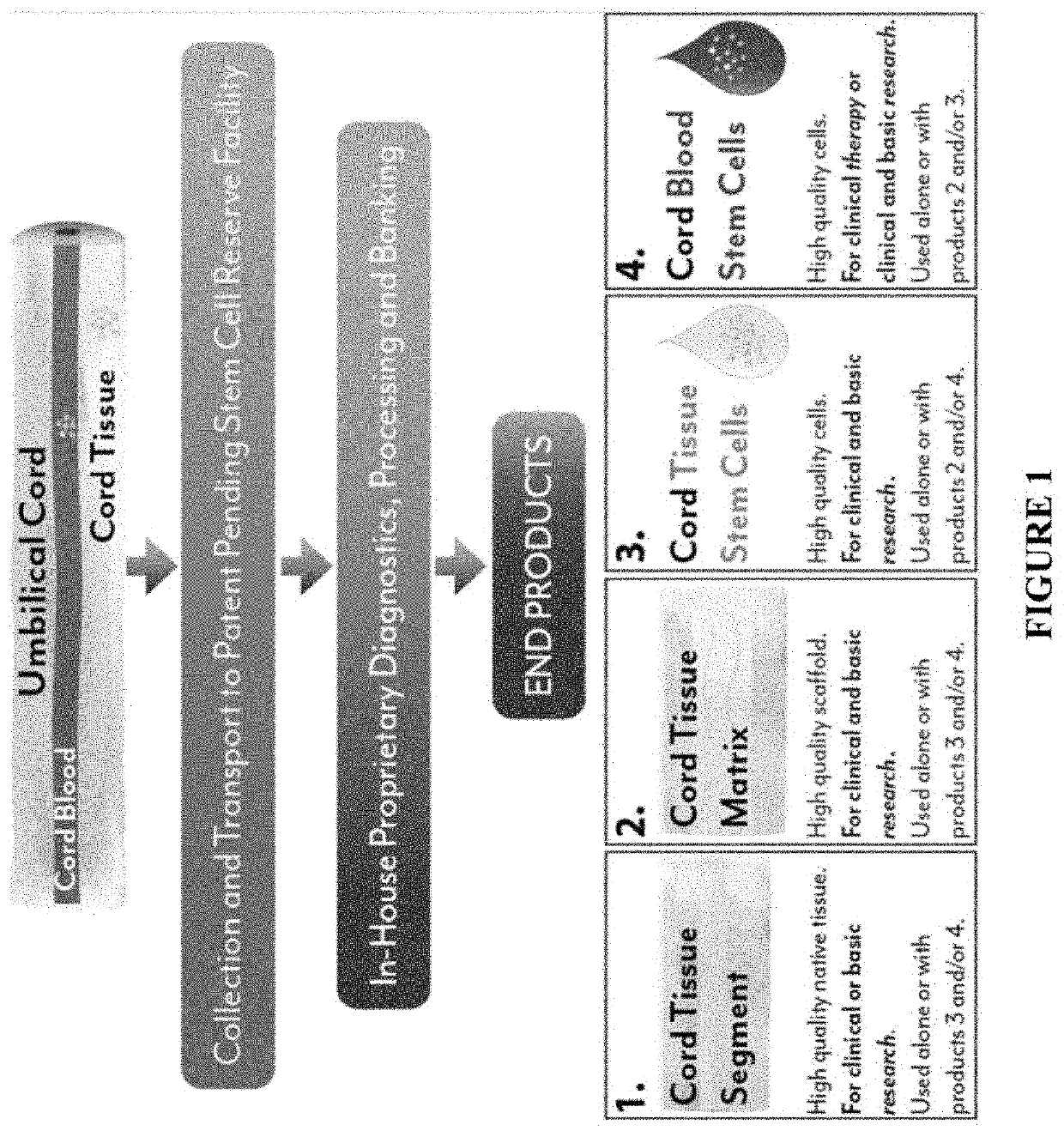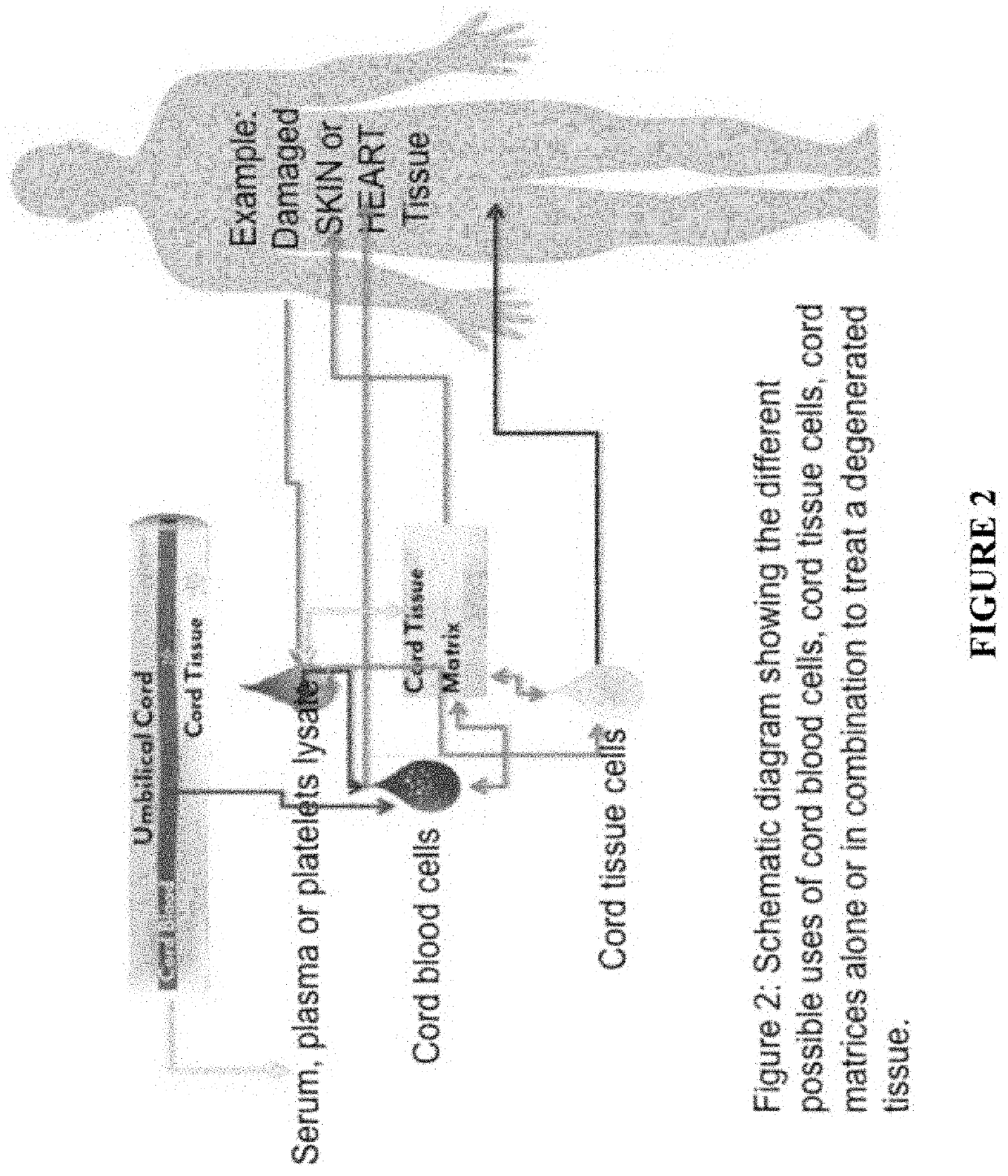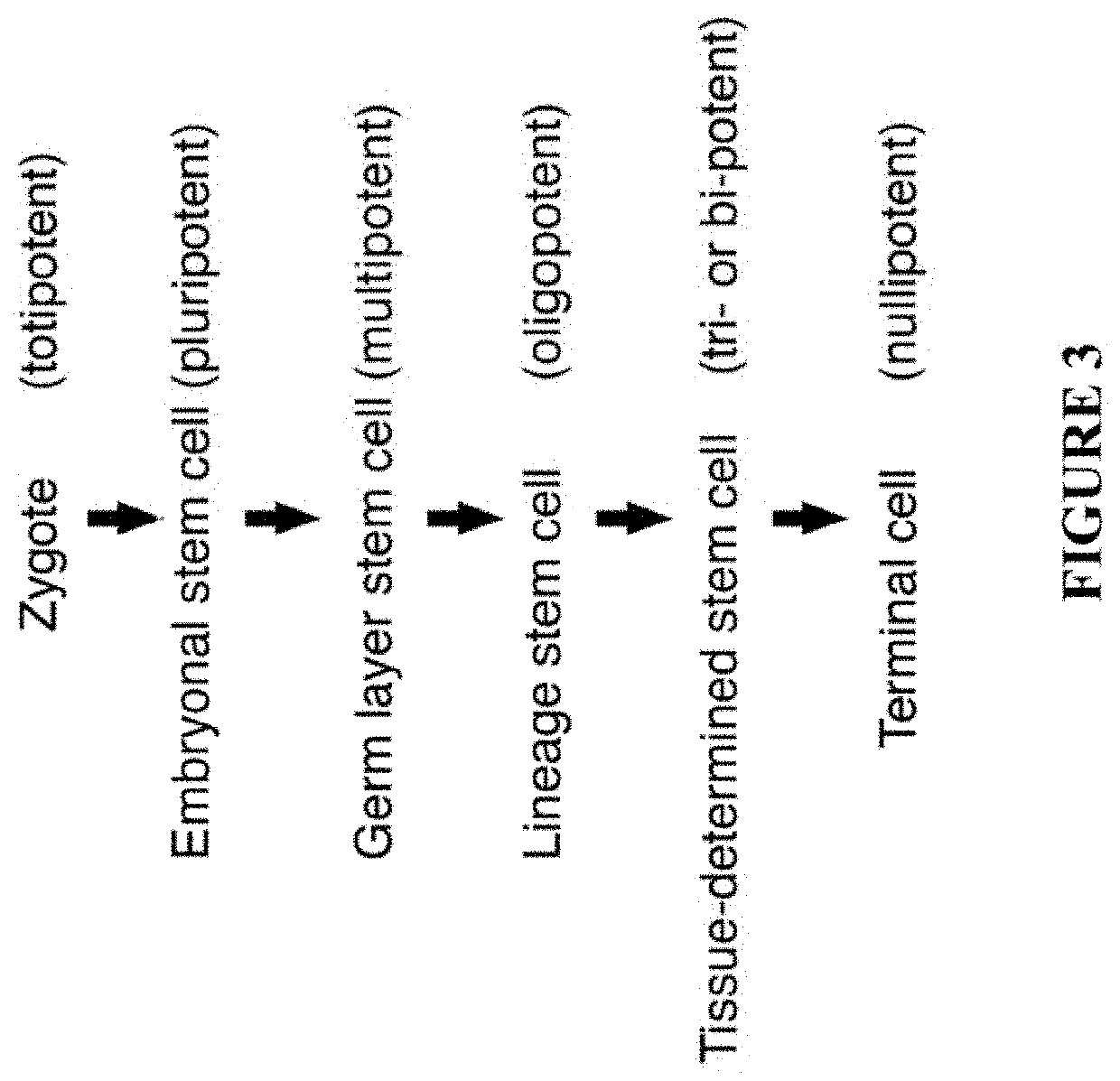Stem cells & decellularization tissue matrix from cord tissue
a technology of stem cells and cord tissue, which is applied in the field of stem cells & decellularization tissue matrix from cord tissue, can solve the problems of incongruity in the literature, not all umbilical cord tissue cells have been tested for stem cell activity, and the field is difficult to understand, so as to minimize immunoreactivity, improve transplant outcome, and minimize rejection
- Summary
- Abstract
- Description
- Claims
- Application Information
AI Technical Summary
Benefits of technology
Problems solved by technology
Method used
Image
Examples
Embodiment Construction
[0092]The present disclosure provides any one or more of the following embodiments, in any combination: 1) 3D culture expanded cord blood in the presence of autologous cord tissue-derived cells and plasma; 2) 3D culture expanded cord blood in the presence of autologous cord tissue-derived matrix and plasma; 3) 3D culture expanded cord blood in the presence of autologous cord tissue-derived cells, cord tissue-derived matrix and plasma; 4) cord blood sera and other products for use in storage and culturing of cells; 5) umbilical cord tissue-derived biomatrix, which is decellularized cord tissue with intact or broken vessels; 6) umbilical cord tissue-derived cells, which is a complete mixture of cells mechanically liberated from the cord tissue; 7) a mixture of 5 and 6, where the mix of cord tissue cells are reinfused back into the decellularized tissue, 8) a mixture of cord blood mixed with autologous 5 and 6, where the mix of cord tissue cells are reinfused back into the decellulariz...
PUM
| Property | Measurement | Unit |
|---|---|---|
| temperatures | aaaaa | aaaaa |
| temperatures | aaaaa | aaaaa |
| temperatures | aaaaa | aaaaa |
Abstract
Description
Claims
Application Information
 Login to View More
Login to View More - R&D
- Intellectual Property
- Life Sciences
- Materials
- Tech Scout
- Unparalleled Data Quality
- Higher Quality Content
- 60% Fewer Hallucinations
Browse by: Latest US Patents, China's latest patents, Technical Efficacy Thesaurus, Application Domain, Technology Topic, Popular Technical Reports.
© 2025 PatSnap. All rights reserved.Legal|Privacy policy|Modern Slavery Act Transparency Statement|Sitemap|About US| Contact US: help@patsnap.com



